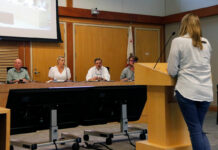Farmlands are home to abundant wildlife. Far beyond the planted
fields or property boundaries, farms and ranches are important land
and water resources for many native species. Almost every farmer or
rancher has a creek or woodland — part of the ranch, environment
and habitat we so badly need to protect.
Since 1965, farmers have been protecting their land from
development pressure with the help of the Williamson Act. This
landmark legislation, also known as the California Land
Conservation Act, has allowed farmers to maintain open space with a
focus on acres, soil quality and development potential. This act
has been, frankly, a keystone of the state’s agricultural and open
space protection.
Named for former Kern County Assemblyman John Williamson, the
Williamson Act conserves agricultural and open space lands through
voluntary contacts, reduces tax assessments on bona fide farmlands
and directs state support to make up the tax deficit to
counties.
By state law, county assessors must lower the value of
Williamson Act properties to reflect their use as agriculture and
open space, instead of their potential development value. Private
property owners sign contracts with counties and cities, agreeing
to restrict their land to agriculture, open space, and compatible
uses for 10 years. Williamson Act contracts then automatically
renew each year so that protection for the land rolls into the
future. Once under contract, the likelihood that farmland will stay
in agriculture increases significantly.
What does this program cost? Historically, the state’s general
fund has paid counties and cities about $40 million a year to make
up for the property tax revenues lost because of lowered
assessments. In addition, the general fund automatically backfills
school districts for lost property taxes.
Until now. In the revised budget proposal that Governor Arnold
Schwarzenegger unveiled in May, Williamson Act funding would be
reduced to $1000 for the entire state. Many people are concerned
that, absent the state’s support, the resulting hole in county
budgets will be filled by increased taxes on farmers who are
already protecting the state’s critical resources of streams,
forests and grasslands. More likely, the virtual elimination of
state support for one of California’s most cost-effective land
conservation programs will force many farmers to abandon productive
agricultural land and sell it to residential or commercial
developers.
In response to this potential threat, I introduced SB 1142. My
bill, the California Farmland Conservancy Program Act, creates a
relief stream of funding for critical farm and ranchland habitats.
While it does not require any additional taxes, it does establish
the Farm, Ranch and Watershed Fund. This important new fund would
be managed by the state Department of Conservation, which would
seek its own grants for the program. Money would come from existing
bonds for soil, water and farmland conservation. Non-profits could
also be involved, via cost-sharing, in the identification of
critical habitats and other joint projects.
The purpose of the new fund is to buy conservation easements on
agricultural land. Those easements allow the continuation and
improvement of agriculture, but keep it in its existing envelope.
The easements would not affect farming practices. The goal is to
protect those ‘nonagricultural qualities’ that are ‘inherent to the
property.’ And the best way to do that is to protect farms…and
farmers.
And farms are truly threatened. In Sonoma, Napa, and Solano
counties alone, almost 100,000 acres of farmland has been lost
since 1984. The biggest loss was in grasslands, which are good for
livestock, wildlife, and watershed protection.
SB 1142 is good government. It gives farmers the ability to tap
into an existing funding stream to protect the farms from which we
all benefit. And it makes better use of tax dollars through
carefully evaluated easements to protect critical habitats and
watersheds. Better yet, it gives the state the power to derive
money from some non-tax sources for farm and ranch protection so
that conservation is not annually subject to the state’s changing
budget.
The Williamson Act may be in a state of limbo, but that’s no
reason to give up on farms and ranches – not to mention farmers and
ranchers – while we wait.
Patricia Wiggins represents California’s 2nd Senate
District, which includes portions or all of Humboldt, Lake,
Mendocino, Napa, Solano and Sonoma Counties.








